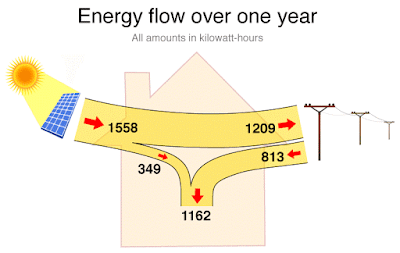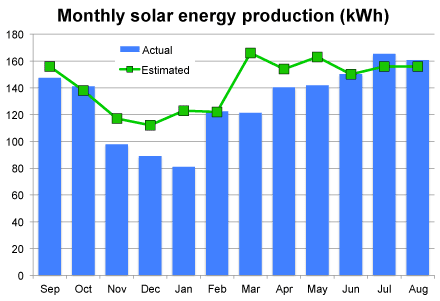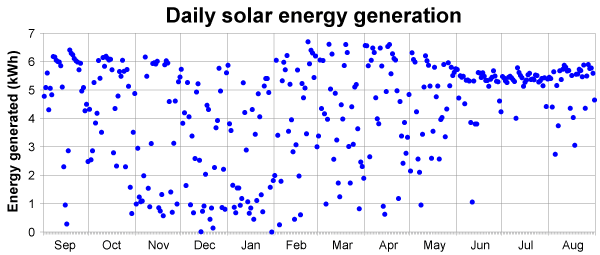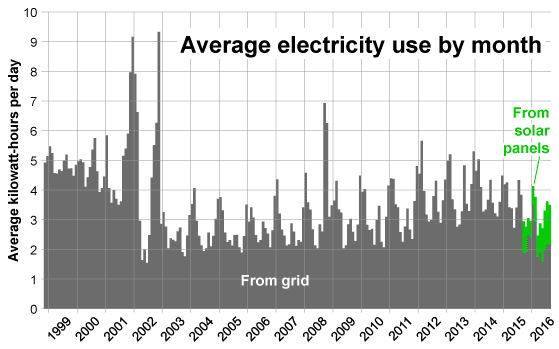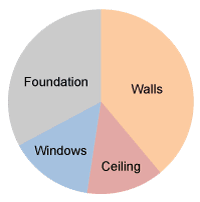But the fallout from Trump’s latest scandal has changed the landscape incredibly fast: his bragging in vulgar terms about habitually committing sexual assault has pushed many Utahns over the edge. Governor Herbert and several other prominent Utah Republicans have withdrawn their endorsements, and several who were on the fence have finally taken a stand against Trump, joining Mitt Romney, who has been a never-Trumper all along. Senator Hatch and my own Rep. Bishop are still supporting Trump, but they’re undoubtedly feeling a bit lonely at the moment. Most remarkable of all, the Deseret News has just published an editorial calling on Trump to drop out of the race, while expressing the hope that Congress will keep President Clinton in check.
Of course Utah won’t be the state that tips the balance of the Electoral College. But it’s still fun to consider whether Clinton could actually win Utah, so let’s take a look at the polling data. Here’s a screen capture from FiveThirtyEight.com, listing the nine Utah polls that weigh most heavily in that site’s Utah forecast:
The polls are listed in descending order by their FiveThirtyEight-assigned weights, based on the quality of the pollster, the sample size, and how recently the poll was conducted. The range of polling results is remarkably wide, but notice that the overall quality of the polling is poor: all of the polls are substandard in at least one of the three respects. Even the highest-weighted poll is by a pollster (Dan Jones) with only a C+ grade, and is now more than two weeks old. The highest-quality poll, conducted by SurveyUSA for the Salt Lake Tribune and the Hinckley Institute, is now four months old.
Nevertheless, FiveThirtyEight has combined all the Utah polls into a weighted average, then done some further processing to obtain a predicted most-likely outcome. Here’s a summary of the calculation:
The first four adjustments made to the polling average are small and, in my opinion, should be uncontroversial. One of these, the “trend line” adjustment, tries to update the older results based on trends in other states (and the nation as a whole) for which there is abundant recent polling. In principle, this adjustment should account for Clinton’s rise in the polls since the September 26 debate, up to but not including the events of the past two days.
But the adjusted polling average allocates only 81.9% of the vote to Clinton, Trump, and Johnson. The next step then assumes that nearly all of the remaining 18.1% will end up split evenly between Clinton and Trump, and here’s where I think the FiveThirtyEight model makes a Utah-specific error. The problem is Utah-based minor candidate Evan McMullin, who entered the race only two months ago yet seems to be polling almost as well as Johnson: 12% in the top-weighted Dan Jones poll, and 9% in the second-place PPP poll. It seems to me that if Johnson is allowed to retain his 12.6% share at this stage of the calculation, then McMullin should also retain his 10% or so.
FiveThirtyEight’s final adjustment is to mix in a prediction based not on polls but on a demographic regression model, which uses past voting patterns (broken down by region, race, religion, and educational level) to try to compensate for inadequate polling in states like Utah. (This is done even for the site’s “polls only” model, which is the one I’m working from.) But this adjustment could also be problematic, because of Utah’s (and Mormons’) peculiar affinity for Romney in 2012 and distaste for Trump in 2016.
So let’s back up to the “adjusted polling average” but tentatively give McMullin a share that’s 2% behind Johnson:
- Clinton 28.8%
- Trump 40.5%
- Johnson 12.6%
- McMullin 10.6%
- Other/undecided 7.5%
My guess is that a certain fraction of Trump’s 40.5% will follow Gov. Herbert’s lead and withdraw their support—some in direct reaction to the recent news and others because they now have “permission” from authorities they trust. Also, I doubt that Trump can now gain from any defections of Johnson, McMullin, or other/undecided voters. So unless there are further unexpected developments, it looks to me like Trump will end up with only 30% to 35% of the Utah vote.
Can Clinton’s share exceed this? If Trump gets only 30% then the answer is almost certainly yes: Clinton would then have to gain only a tiny fraction of the undecideds, Trump defectors, and perhaps defectors from minor candidates. If Trump can keep his vote share near 35% then it will be harder for Clinton, but still not out of the question. Let’s also remember that the percentages listed above are pretty uncertain, and you could make a case for discarding the weird outlying CVOTER International poll results; then Trump’s support would have already been below 40% even before the latest scandal.
Is there any chance that Johnson or McMullin could win? I think that would be a long shot, because they seem to be splitting the conservative anti-Trump vote so evenly. Only if one of them drops out, or otherwise implodes, would the other have a decent chance of surpassing Clinton.
The bottom line, in my opinion, is that Clinton is now a slight favorite to defeat Trump in Utah and carry the Beehive State. I say “slight” because of the large uncertainties in the past polling data, in the impact of the recent developments, and in what could still happen during the next 30 days. In any case, I can hardly wait to see what upcoming polls of Utah show, and to see how Utahns actually vote in such an extraordinary election.
Update, 16 Oct 2016: During the week since I wrote this article we’ve gotten three new Utah polls, and FiveThirtyEight has updated its Utah model to include Evan McMullin. Here’s their summary table of the polls that include McMullin, which are the only ones the model now uses:
The Y2 Analytics poll, first reported late on the night of the 11th, caused a flurry of excitement because it shows Clinton and Trump tied at only 26%. Equally remarkable is that McMullin is just behind at 22%, even though only 52% of respondents were aware of his candidacy. This result immediately made me question my earlier dismissal of McMullin’s chances. It also prompted articles covering the race in the New York Times, Washington Post, and FiveThirtyEight.
The subsequent polls from Monmouth and YouGov confirm that McMullin’s support is around 20%, but contradict the earlier indication that his gain has come entirely at the expense of Trump, whose support remains in the mid-30s. If these polls are a reasonably accurate predictor of the final results, then Trump will still win Utah by a safe margin.
After combining all six polls and making the minor adjustments described above, FiveThirtyEight now obtains the following “adjusted polling averages”:
- Clinton 24.1%
- Trump 33.8%
- Johnson 10.7%
- McMullin 19.4%
- Other/undecided 12.0%
Update, 8 Nov 2016: Polls of Utah have been coming thick and fast over the last three weeks, but the picture hasn’t changed much over this time. Here’s another screen capture from FiveThirtyEight showing nearly all of the polls that include McMullin:
The general picture here is pretty clear: Trump is ahead in almost every poll, though there’s disagreement over whether his lead is by single or double digits. McMullin is the frontrunner in just one poll, and Clinton in none. Johnson has collapsed. Here are FiveThirtyEight’s averages and adjustments, to obtain its final prediction for the Utah presidential election:
In the adjusted polling average, Trump comes out ahead of Clinton by nearly ten percentage points, while McMullin is behind Clinton by a point and a half. But then FiveThirtyEight assigns most of the remaining undecided voters to McMullin (presumably there’s a precedent for this), so McMullin ends up in second place in the final projection. The calculated win probabilities are Trump 82.9%, McMullin 13.5%, and Clinton 3.6%.
Meanwhile, Election Betting Odds has Trump at 87% likely to win, Clinton at 7%, and Other at 6%. Clinton’s higher odds here may reflect a recent report that she is ahead among early voters. It wouldn’t especially surprise me if Clinton beats her polls by a few points due to the early vote advantage, especially because many Utahns haven’t gotten used to Utah’s new mostly-by-mail voting system, and the number of physical polling locations has been greatly reduced since the last presidential election. Republicans who have hesitated this long because they’re unenthusiastic about all the candidates may have little motivation to find their polling locations and wait in the potentially long lines.
Still, it seems highly unlikely that either Clinton or McMullin will make up the roughly ten-point polling deficit to catch Trump, who will probably win Utah with less than 40% of the vote.
Just as Trump’s potential national victory says a lot about the state of American politics, so also his ability to win Utah tells us that our state isn’t as different as many would like to believe. Although many prominent Utah politicians have denounced Trump, Reps. Chaffetz and Stewart ultimately backtracked and said they would vote for him anyway. Governor Herbert and Mitt Romney have remained silent about whom they’re voting for. (A McMullin endorsement from either of them, which I was half expecting four weeks ago, might have put McMullin in the lead.) The bottom line is that even though most Utahns fully understand that Trump is a lying, bigoted, asshole who’s absolutely unqualified for the job, their allegiance to the Republican Party drives them to dislike Clinton even more. Many Utahns will explain that at least Trump will (he says) appoint anti-abortion justices to the Supreme Court. Few of them, I suppose, have carefully thought through the risks that America and the world will face if Trump actually wins.
Update, 19 January 2017: Before the inauguration of President Trump I suppose I should finish this saga with the actual Utah election results:
- Trump 45.5%
- Clinton 27.5%
- McMullin 21.5%
- Johnson 3.5%
- Others 2.0%
Comparing to the final FiveThirtyEight polling averages above, we see that not only did essentially all of the undecided voters apparently end up voting for Trump, but he also picked up a fair number of McMullin and Johnson defectors in the final days before the vote. This result fits in nicely with the conventional wisdom about what happened in the decisive swing states, with the further complication that a larger percentage of Utah voters was up for grabs. Of course, it’s also possible that there was a systematic polling error in Utah, such as an under-sampling of white voters without college degrees. In any case, I was obviously wrong to predict that Trump would end up with under 40% of the vote. As for Clinton, she did over-perform her polls as I more or less predicted, but only by about a point.
Despite my poor numerical predictions, I think the overall tone of my final election-day paragraph holds up pretty well. Of course the important question now is what will happen during Trump’s presidency. The nation is headed into uncharted territory, with a vast range of possible outcomes ranging from reasonably normal to absolutely catastrophic. I don’t see how anyone could possibly predict what will happen.






